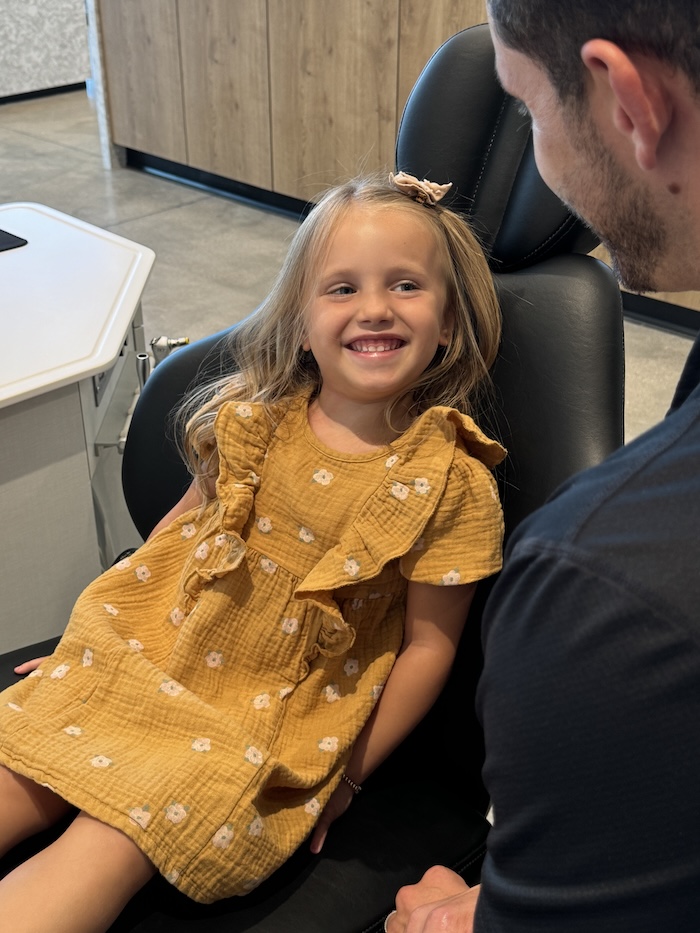Proper airway development is crucial to a child’s overall health and development. Breathing issues caused by airway obstructions or improper jaw alignment can impact sleep quality, facial growth, and even cognitive function.
Many parents are unaware that orthodontic treatment is about more than straightening teeth — it can also address underlying airway problems.
Airway orthodontics optimizes a child’s breathing patterns and ensures that their jaw and facial structures develop correctly. Identifying early signs that your child needs airway orthodontics early on can prevent long-term complications.
What Is Airway Orthodontics for Children?
Airway orthodontics is a specialized field that goes beyond typical orthodontic care. While standard orthodontics focuses primarily on teeth alignment, airway orthodontics adjusts the entire facial structure and breathing pathways to:
- Improve airflow
- Correct improper breathing habits
- Promote optimal jaw growth
Children with airway issues often develop improper oral habits, such as mouth breathing, which can lead to long-term dental and health concerns.
Addressing these issues early on can promote healthy jaw development, proper tongue posture, and a well-balanced facial structure.
Signs Your Child Needs Airway Orthodontics
Recognizing the signs your child needs airway orthodontics can prevent more complex issues in the future. Below are some key indicators that your child needs airway-focused orthodontic care.
1. Mouth Breathing
Habitual mouth breathing is one of the most common signs of airway issues in children. Proper breathing should occur through the nose, which filters and humidifies air while promoting correct tongue posture.
When a child consistently breathes through their mouth, it can lead to:
- Dry mouth and increased risk of cavities
- Improper tongue placement, which affects jaw development
- Narrowed dental arches and crowded teeth
2. Snoring or Sleep Apnea Symptoms
Frequent snoring or restless sleep in children is not typical and may indicate airway obstruction. Sleep-disordered breathing, including pediatric sleep apnea, can impact a child’s ability to get restful sleep.
Symptoms to watch for include:
- Loud snoring
- Frequent night waking or restlessness
- Daytime fatigue or difficulty concentrating
- Bedwetting beyond the typical age
3. Frequent Allergies or Chronic Nasal Congestion
Children with allergies or nasal congestion may be at risk for airway-related orthodontic problems. When nasal passages are blocked, children breathe through their mouths more often, which can lead to improper jaw development and facial growth.
4. Crowded or Misaligned Teeth
Dental crowding or misaligned teeth can indicate an underdeveloped airway. If a child’s upper jaw is too narrow, it can restrict nasal breathing and lead to improper tongue posture.
Early orthodontic treatment can help guide jaw development and create more space for proper breathing.
5. Speech Delays or Difficulty Pronouncing Certain Sounds
Speech development is closely linked to tongue posture and jaw alignment. If a child struggles with certain speech sounds, such as “s” or “r,” it could be due to an underlying orthodontic issue affecting their oral structures.
A comprehensive orthodontic evaluation can determine if airway issues are contributing to speech delays.
6. Poor Posture and Facial Development Issues
Airway problems can also impact posture and facial growth. Children with airway issues may exhibit:
- A forward head posture to compensate for restricted breathing
- Dark circles under the eyes due to a lack of proper sleep
- A long, narrow face or recessed chin
Why Early Treatment Matters
Early intervention can make a significant impact on a child’s long-term health and development. When airway orthodontic issues are left untreated, they can lead to:
- More severe sleep-disordered breathing problems in adulthood
- The need for more invasive orthodontic or surgical treatments later in life
- Poor concentration, behavioral issues, and academic struggles due to inadequate sleep
By addressing airway issues early, orthodontists can guide jaw development and improve breathing function. These corrections not only benefit oral health but also support overall well-being.
When to Schedule an Orthodontic Consultation
The American Association of Orthodontists (AAO) recommends that children have their first orthodontic evaluation by the age of 7. Early assessments allow orthodontists to detect airway-related concerns and implement corrective measures before they become more complicated.
If your child exhibits any of the signs mentioned above, scheduling an evaluation with an airway-focused orthodontist can provide clarity and peace of mind. The earlier an issue is identified, the more effective and less invasive treatment will be.
How Orthobar Can Help: Schedule a Free Consultation Today
At Orthobar, we specialize in airway-focused orthodontics to help your child develop a healthy, functional smile. Our comprehensive approach includes:
- Advanced diagnostic technology
- Personalized treatment plans
- A patient-first approach
Is your child showing signs of airway issues? Early intervention can set them up for a lifetime of better health.
Schedule a free consultation with Orthobar today! Let’s work together to create a confident, healthy smile for your child.







